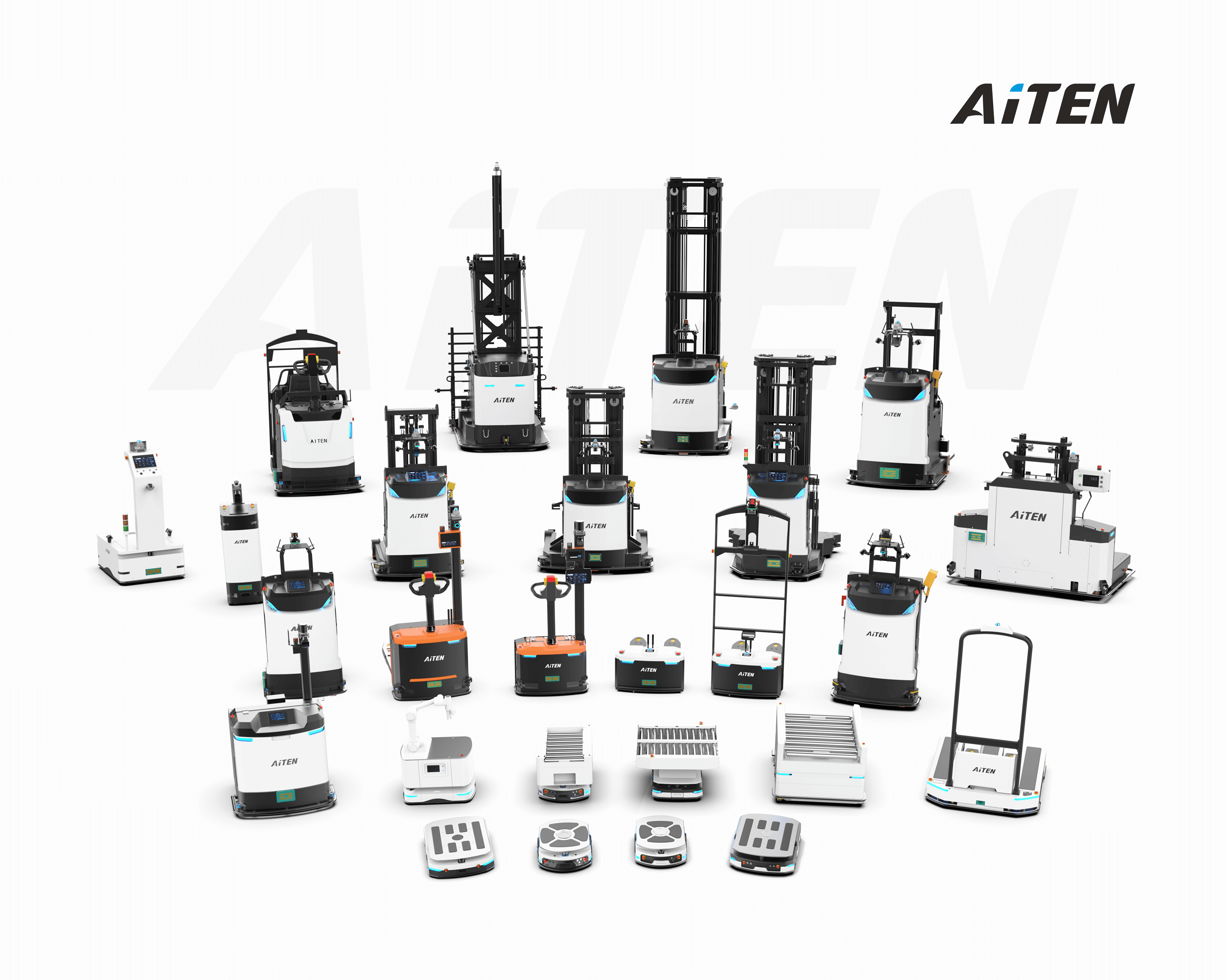자재 취급을 위한 아이텐 로봇의 최고의 자율 지게차
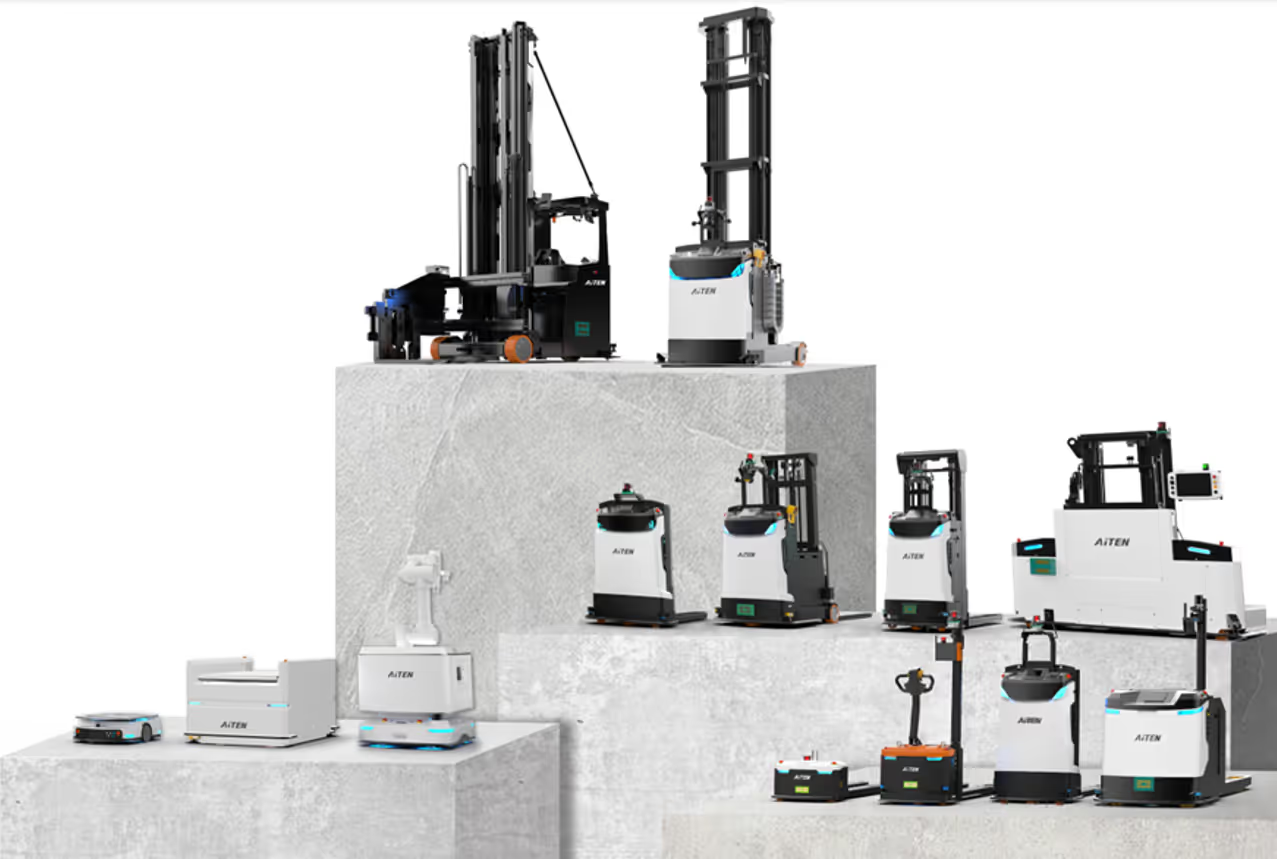
자동화에 대한 요구가 창고와 공장을 계속 재편하면서 자율 지게차는 자재 취급의 판도를 바꾸고 있습니다. 이러한 스마트한 기계는 안전을 개선하고 인건비를 절감하며 운영 효율성을 높입니다. 물류 허브를 관리하든 제조 공장을 관리하든 올바른 자율 지게차를 선택하면 수익에 큰 영향을 미칠 수 있습니다.
이 문서에서는 2025년 자재 취급을 위한 최고의 자율 지게차를 살펴보고 주요 기능을 비교하며 필요에 가장 적합한 솔루션을 선택하는 데 도움을 드립니다.
자율 지게차란 무엇인가요?
자율주행 지게차는 AGV(무인 운반차 ) 또는 AMR(자율 이동 로봇)이라고도 하며, 자율 주행 자재 취급 기계입니다. 이러한 지게차는 센서, LiDAR, SLAM 내비게이션 및 AI 알고리즘을 갖추고 있습니다:
- 사람의 개입 없이 팔레트 또는 상품 운송
- 동적인 환경을 안전하게 탐색
- 실시간으로 장애물 피하기
- WMS/ERP 시스템과 통합
지게차 로봇은 어떤 용도로 사용할 수 있나요?
지게차 로봇은 다양한 자재 취급 시나리오에서 다재다능하고 매우 유용합니다.
창고에서는 팔레트 운송에 탁월하여 보관 장소와 적재/하역 구역 간에 상품을 효율적으로 이동합니다.
제조 환경에서 이 로봇은 원자재 취급에 탁월한 성능을 발휘하여 생산 라인에 안정적인 공급을 보장합니다.
완제품 관리에서는 완제품을 보관 또는 배송 구역으로 운반합니다.
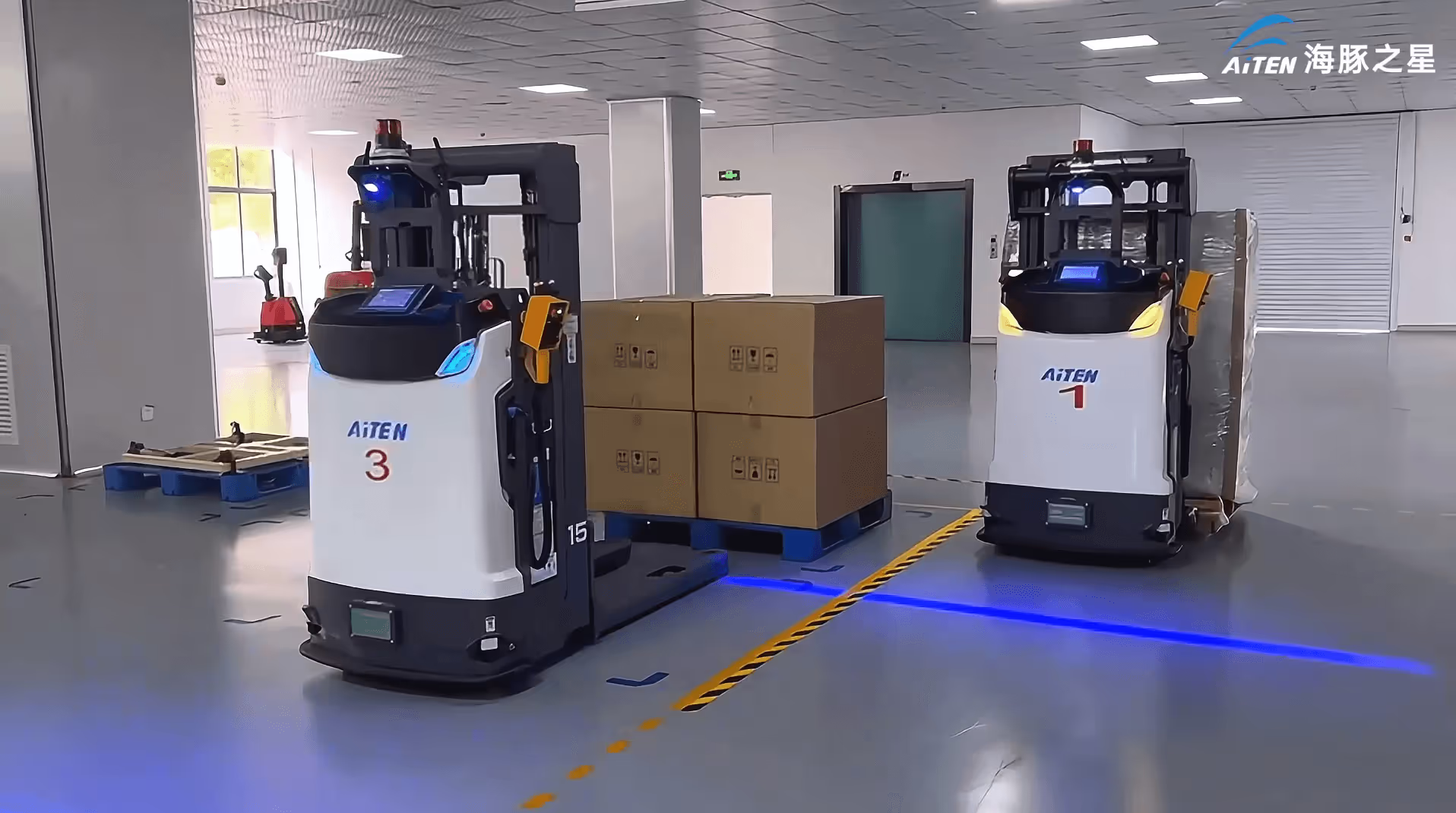
재고 관리는 자동화된 지게차의 가치를 입증하는 또 다른 영역입니다. 자동화된 지게차는 자동으로 재고를 확인하고 보충 작업을 처리하여 오류를 줄이고 전반적인 재고 정확도를 개선할 수 있습니다.
물류 운영에서 크로스 도킹(즉, 입고 및 출고 배송 간 신속한 상품 이송)에서 중요한 역할을 수행하여 유통 프로세스를 간소화하는 데 도움을 줍니다.
아이텐 로봇 자율주행 지게차 추천
1. AiTEN APx 무인 운반차
AiTEN APX 무인운반차는 최대 3000kg의 정격 적재 능력을 갖춘 장기 반복 작업을 위한 자율 솔루션을 제공합니다. 이러한 작업은 종종 높은 작업자 이직률을 초래합니다. 이제 이러한 단조롭고 반복적인 작업을 자동화하여 인재를 유지하고 숙련된 작업자를 더 매력적이고 고부가가치 작업으로 승격시킬 수 있습니다. 즉각적인 작업 실행이 필요한 경우 APX 무인운반차는 수동 모드로 전환하여 솔루션의 유연성을 더욱 향상시킬 수 있습니다.
- 좁은 통로 처리
- 생산 작업장에서의 자재 배포
- 재고 보충 및 운송
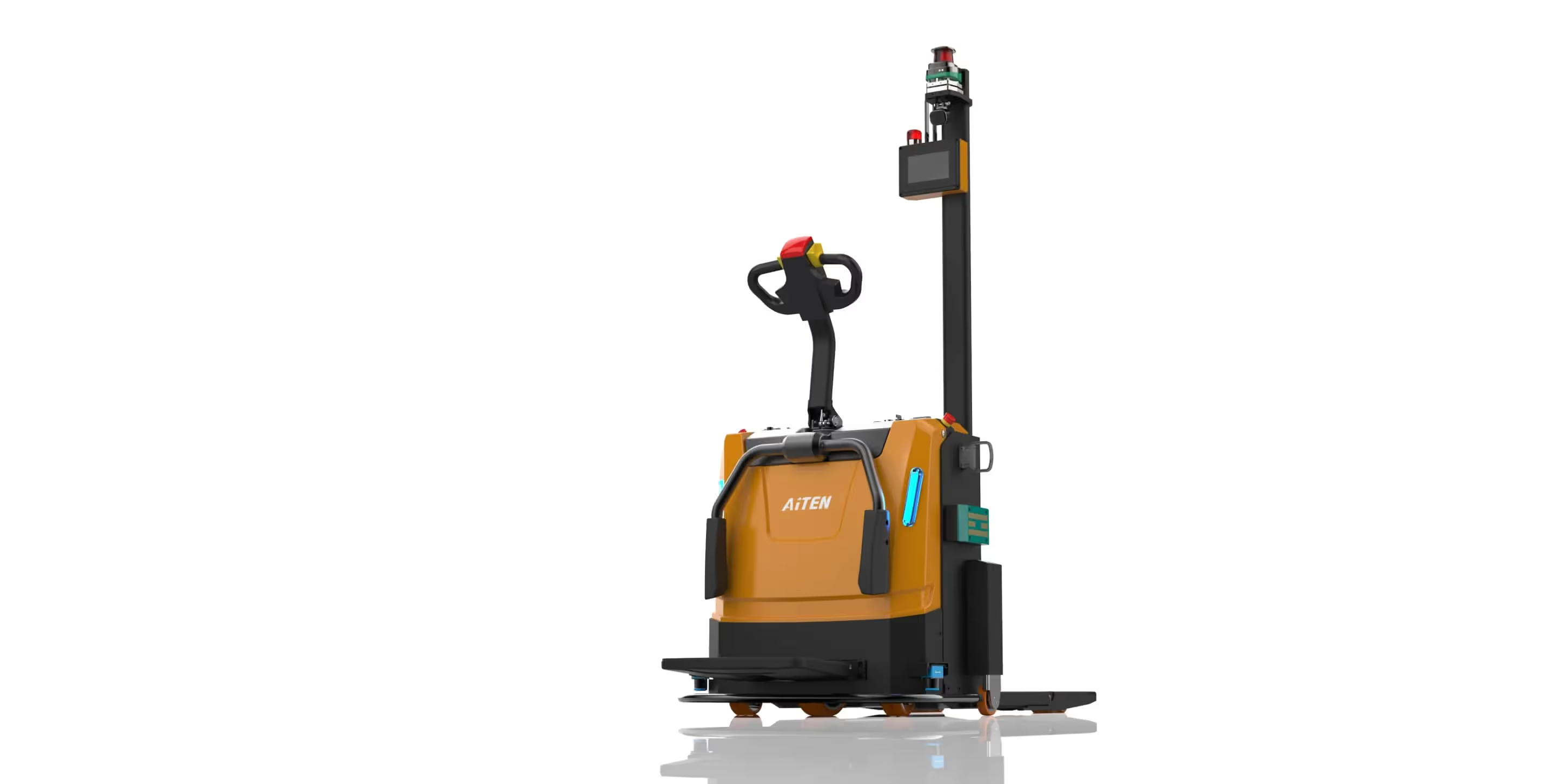
2. AiTEN AR 전진 이동 자동 지게차
아이텐 로보틱스의 자동 리치 트럭은 정격 적재 용량이 1000kg-2000kg이며 3미터 높이에서 상품을 자동으로 보관하고 회수할 수 있어 수직 보관 공간을 극대화하고 노동력 부족 문제를 해결할 수 있습니다. 재고 증가 문제에 직면한 물류 센터 및 창고에 이상적입니다.
- 자율 충전
- 다양한 온도 및 창고 관리 시스템에서 작동합니다.
- 유통 센터 및 창고에 이상적
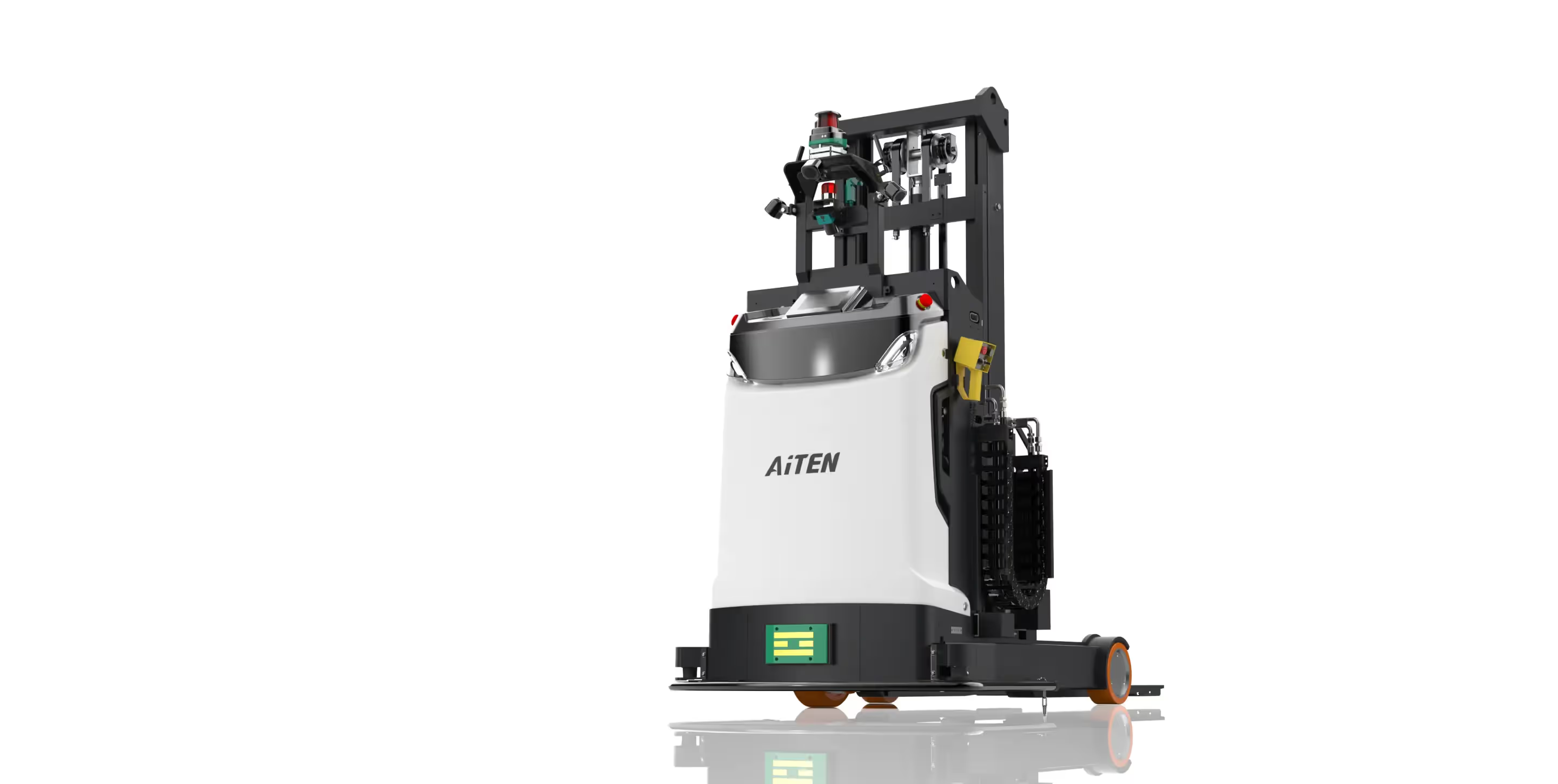
3. AiTEN AE 자동 카운터 밸런스 스태커
자동 카운터밸런스 스태커는 1,000~3,000kg의 정격 적재 용량으로 수평 및 수직 운송 요구 사항을 충족하는 자율 솔루션을 제공합니다. 이러한 요구 사항을 자동화하면 지속적인 노동력 문제를 줄이고 제품, 시설 및 지게차의 손상을 방지할 수 있습니다.
- 팔레트를 보관하거나 제거할 수 있는 높이는 최대 3미터에 이릅니다.
- 폭이 작은 팔레트 처리
- 자율 충전
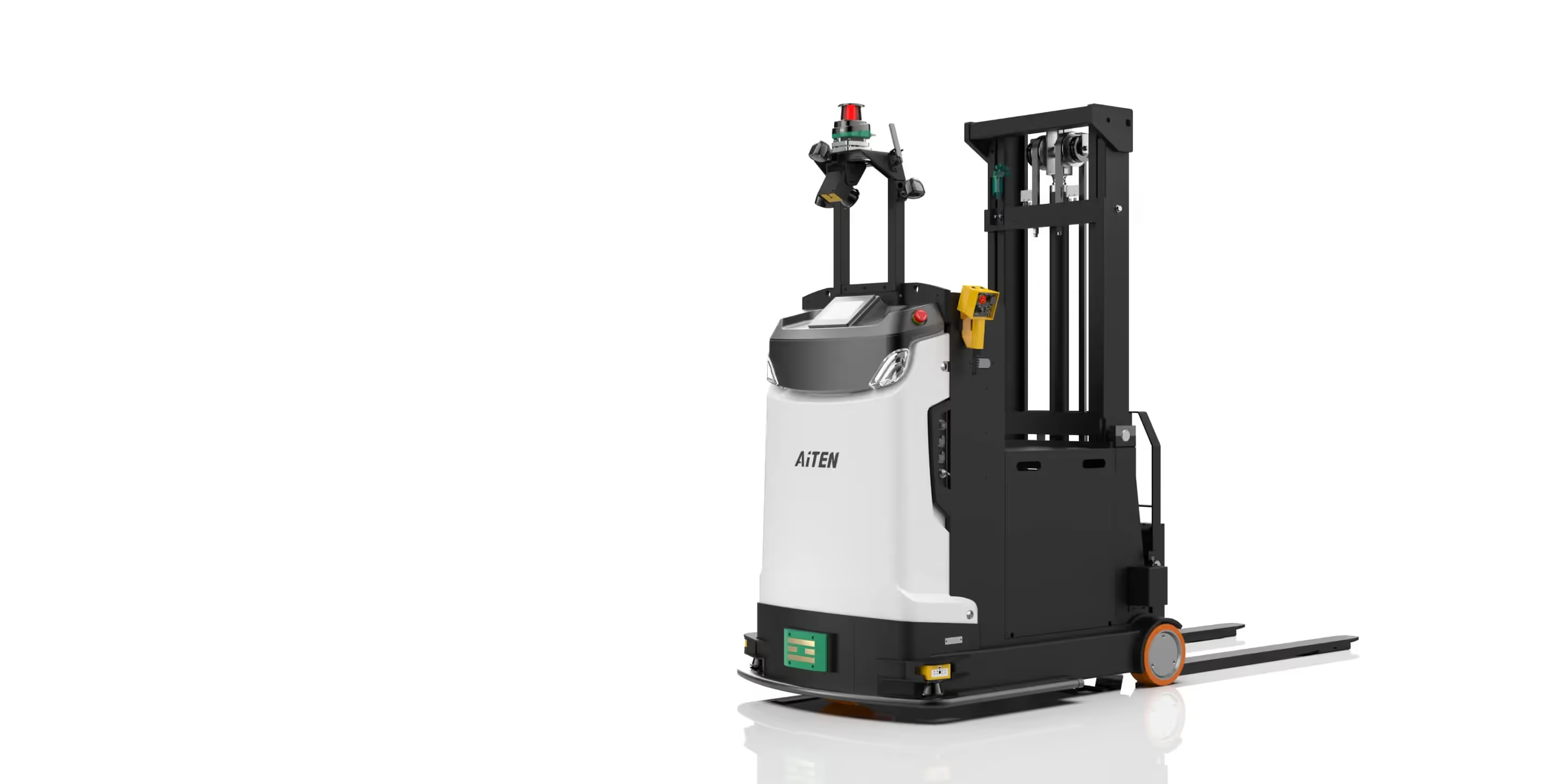
올바른 자율 지게차를 선택하는 방법
지게차 로봇을 운영에 통합하기 전에 몇 가지 주요 요소를 신중하게 평가하는 것이 중요합니다.
먼저 지게차 자동화가 기술적으로나 경제적으로 실현 가능한지 평가합니다. 이를 위해서는 통로 폭, 자재 취급 프로세스 등 현재 운영 중인 작업을 분석하여 지게차 로봇이 특정 환경에 적합한지 판단해야 합니다. 초기 비용뿐만 아니라 효율성 향상과 오류 감소로 인한 장기적인 비용 절감 효과까지 고려한 상세한 투자 수익 분석이 필수적입니다.
잠재적인 솔루션의 확장성과 유연성을 고려하여 비즈니스와 함께 성장하고 변화하는 시장 수요에 적응할 수 있도록 투자할 수 있는지 확인하세요. 각 방식마다 장단점이 있기 때문에 내비게이션 기술 선택도 중요합니다. 선택한 솔루션이 기존 창고 관리 및 ERP/MES 시스템과 원활하게 통합될 수 있는지 확인해야 합니다.
안전을 최우선으로 고려해야 하므로 신뢰할 수 있는 안전 기능과 인증이 있는지 확인하세요. 지게차 로봇이 시설 내 사람 및 기타 장비와 어떻게 상호 작용할지 고려하세요.
이러한 요소를 신중하게 고려하면 지게차 로봇이 비즈니스에 적합한지, 어떤 솔루션이 운영 요구 사항과 비즈니스 목표에 가장 적합한지 정보에 입각하여 결정할 수 있습니다.
지게차 로봇 사용의 이점
일반적으로 AGV(자동 운반 차량)로 알려진 자동 지게차 로봇에는 주변 환경을 자율적으로 탐색할 수 있는 최첨단 기술이 탑재되어 있습니다. 즉, 사람의 개입 없이도 한 위치에서 다른 위치로 자재를 운반할 수 있습니다. 이 혁신적인 자재 취급 방식은 다음과 같은 이점을 제공합니다:
1. 지게차 로봇을 사용하면 비즈니스에 여러 가지 중요한 이점을 제공할 수 있습니다. 가장 중요한 것은 휴식이나 교대 근무 변경 없이 24시간 내내 작동할 수 있어 생산성을 크게 향상시킬 수 있다는 점입니다.
2. 이러한 지속적인 운영은 처리량과 효율성을 크게 향상시켜 기업이 더 많은 상품을 더 빠른 속도로 일관성 있게 처리할 수 있도록 지원합니다.
3. 지게차 로봇은 인적 오류와 피로 관련 사고를 제거함으로써 작업장 내 부상을 크게 줄여줍니다. 첨단 센서 시스템을 통해 장애물을 감지하고 피할 수 있어 직원들에게 보다 안전한 작업 환경을 조성합니다.
4. 지게차 로봇 시스템에 대한 초기 투자 비용은 상당할 수 있지만, 장기적인 비용 절감 효과도 상당합니다. 이러한 비용 절감은 인건비 절감, 상품 및 인프라 손상 최소화, 공간 활용 최적화에서 비롯됩니다.
5. 자율 시스템의 정밀도는 재고 정확도를 개선하고 잘못된 배치나 손상으로 인한 손실을 줄일 수 있습니다.
6. 지게차 로봇은 귀중한 유연성과 확장성을 제공합니다. 변화하는 창고 레이아웃과 수요 변동에 적응할 수 있어 기업이 신속하게 운영을 조정할 수 있습니다. 이러한 적응력은 계절적 변동에 영향을 받거나 향후 확장을 계획하는 기업에게 특히 유용합니다.
7. 시스템에서 생성된 데이터는 자재 흐름, 장비 활용도 및 운영 병목 현상에 대한 귀중한 인사이트를 제공하여 데이터 기반 의사 결정과 지속적인 프로세스 개선을 가능하게 합니다.
결론
자율 지게차는 물류 및 제조 분야의 자재 취급 프로세스의 혁신을 가속화하고 있으며, 경량 물류창고에서 중량물 제조에 이르기까지 광범위한 분야에 걸쳐 사용되고 있습니다.
자율 지게차 로봇의 도입은 자재 취급 및 물류 분야에서 중요한 순간을 맞이하고 있습니다. 이 기술을 도입함으로써 기업은 급변하는 환경에서도 경쟁력을 유지하고 더 스마트하고 효율적인 미래를 위한 기반을 마련할 수 있습니다.
지능형 솔루션으로 공장이나 창고를 업그레이드할 계획이라면 올바른 자율 지게차를 선택하는 것이 효율성 향상과 비용 절감을 위한 중요한 단계임에 틀림없습니다.
아이텐 로보틱스 소개
지능형 물류 솔루션 전문 기업인 AiTEN Robotics는 지속적으로 '스마트 팩토리' 시나리오에 집중하여 기술 혁신과 산업 요구 사항을 심층적으로 통합해 왔습니다. 전 세계 200개 이상의 제조 고객에게 포괄적인 서비스를 제공하고 있습니다: 다양한 자재 취급 시나리오를 포괄하는 광범위한 자재 취급 로봇 제품 포트폴리오를 활용하여 여러 장치 간의 효율적인 협업을 가능하게 하는 업계 수준의 지능형 스케줄링 시스템을 개발했습니다. 판매 전 계획, 배포 및 구현에서 운영 최적화에 이르는 포괄적인 라이프사이클 서비스 시스템을 통해 기업이 물류 인텔리전스 혁신을 달성하여 제조 산업의 디지털 업그레이드와 고품질 개발을 지속적으로 추진할 수 있도록 지원합니다.
귀사의 공장을 위한 자동화 솔루션을 알아보려면 문의하세요.









_%E7%94%BB%E6%9D%BF%201.avif)

